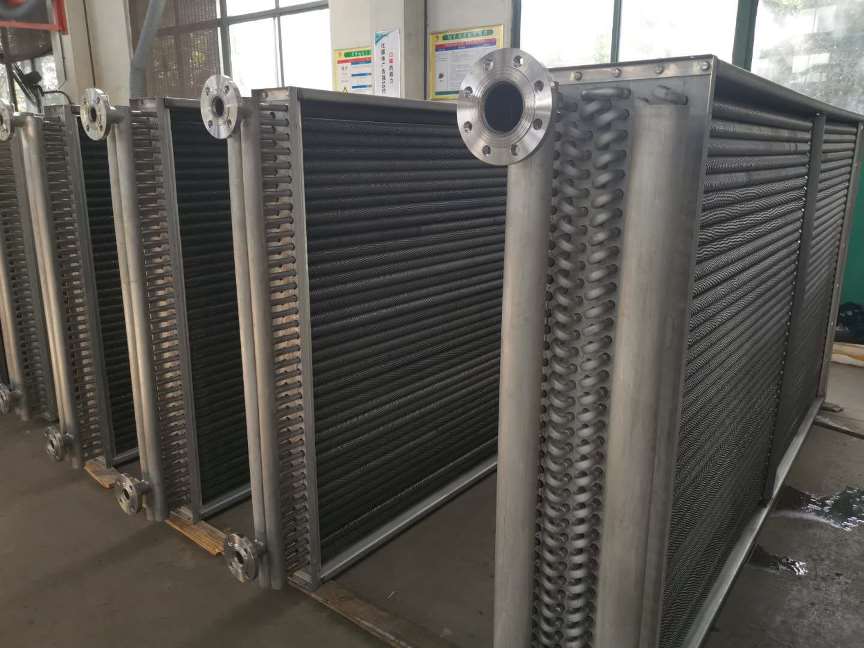Lord Fin Tube-Heat Exchanger Industry Situation in China
The heat exchanger industry in China has experienced significant growth in recent years, driven by industrial expansion, increased energy demand, and a focus on energy efficiency and environmental sustainability.
1. China Heat Exchanger Market Growth and Demand
►Industrial Expansion: China’s rapid industrialization has led to the expansion of industries such as petrochemicals, power generation, steel manufacturing, HVAC, and automotive. These industries are among the largest consumers of heat exchangers.
►Energy Efficiency and Environmental Concerns: China has made significant efforts to improve energy efficiency and reduce carbon emissions, pushing for the development of more efficient heat exchangers, especially in sectors like power generation, chemical processing, and environmental protection.
►Infrastructure Development: Large-scale infrastructure projects such as urbanization, renewable energy plants, and industrial facilities are driving increased demand for heat exchangers.
2. China Heat Exchanger Technological Advancements
►Innovative Materials: The industry is increasingly utilizing advanced materials like titanium, stainless steel, and nickel alloys for improved heat transfer performance and corrosion resistance. These materials are essential for demanding applications such as power plants, chemical processing, and HVAC.
►Laser Welding and Advanced Manufacturing Techniques: Many manufacturers, like your company, are adopting cutting-edge technologies such as laser welding to improve product quality, reduce production costs, and enhance heat transfer capabilities. The use of high-frequency welding for finned tubes is also growing in prominence.
►Customization and Application-Specific Designs: With the diversity of industrial applications, there is a growing trend for customized heat exchangers, such as compact heat exchangers for high-temperature and high-pressure applications.
3. China Heat Exchanger Regulatory and Environmental Factors
►Government Regulations: The Chinese government has enacted various environmental regulations and energy efficiency standards that are directly influencing the heat exchanger market. These include mandates for reducing energy consumption and enhancing the efficiency of industrial systems.
►Shift Towards Low-Carbon and Renewable Energy: With China’s commitment to reaching carbon neutrality by 2060, industries are increasingly focusing on heat exchangers that can enhance the efficiency of renewable energy systems such as geothermal, solar, and waste heat recovery.
►Sustainability and Green Building Standards: The growing demand for green building materials and energy-efficient systems has also led to the rise of heat exchangers in the HVAC sector, particularly in air conditioning systems and energy recovery ventilators.
4. China Heat Exchanger Competitive Landscape
►Domestic Manufacturers: China has a number of prominent domestic heat exchanger manufacturers that have gained a competitive edge due to their ability to scale production, localize designs, and innovate in manufacturing technologies. Many of these companies are also investing heavily in R&D to meet international quality standards.
►Global Players: Several international manufacturers are active in the Chinese market, leveraging advanced technologies and global experience. However, local manufacturers often have a pricing advantage and faster lead times, which gives them a competitive edge in some sectors.
►Consolidation and Mergers: The heat exchanger market in China has seen some consolidation, with smaller manufacturers being absorbed by larger, more established players. This trend is expected to continue as companies aim to gain better access to technology, materials, and markets.
5. China Heat Exchanger Applications and Sectors
►Power Generation: Heat exchangers are vital in power generation, particularly for steam and gas turbines, boilers, and cooling systems. The rising demand for energy efficiency and the development of advanced power plants is driving the need for more advanced heat exchangers.
►Chemical and Petrochemical: This sector remains one of the largest consumers of heat exchangers, as they are used extensively in various processes, including cooling, heating, and condensation of chemical reactions.
►HVAC (Heating, Ventilation, and Air Conditioning): With urbanization, especially in tier-1 and tier-2 cities, the HVAC sector is growing rapidly. Heat exchangers are used in a wide range of applications, from residential to large commercial and industrial HVAC systems.
►Renewable Energy: The renewable energy market, including solar, wind, and geothermal power, has a growing demand for heat exchangers, particularly for heat recovery, waste heat utilization, and efficient heat transfer in systems.
►Food and Beverage: In this sector, heat exchangers are used for pasteurization, sterilization, and refrigeration, and the demand for energy-efficient solutions is rising as companies seek to reduce operational costs.
6. China Heat Exchanger Challenges
►Cost Pressure: The heat exchanger market is highly price-sensitive, and manufacturers must balance the cost of materials, manufacturing processes, and energy efficiency to remain competitive.
►Technological Gaps: While China has made significant progress in heat exchanger manufacturing, there are still gaps in advanced technologies, particularly in the development of heat exchangers for highly specialized and extreme environments (e.g., nuclear, aerospace).
►Environmental Concerns: As the industry grows, managing waste, emissions, and energy use during manufacturing processes remains a challenge. Companies must invest in sustainable practices to meet government regulations and market expectations.
7. China Heat Exchanger Future Outlook
►Continued Growth in Energy-Efficient Solutions: As China seeks to achieve its carbon-neutrality goals, the demand for energy-efficient heat exchangers is expected to rise, especially in sectors like power, chemical processing, and HVAC.
►Increased Export Potential: With the growing capabilities of Chinese manufacturers and the increasing quality of their products, Chinese heat exchanger producers are likely to become more competitive in global markets, particularly in developing regions.
►Focus on Research and Development: Innovation in materials, manufacturing processes, and designs will be critical in maintaining competitive advantage. Companies are investing more in R&D to develop next-generation heat exchangers that are more efficient, durable, and sustainable.
The heat exchanger industry in China is evolving rapidly due to industrial demands, technological advancements, and regulatory pressures. The market is expected to grow steadily, driven by the need for energy-efficient and sustainable solutions across various industries. However, challenges remain, especially in terms of cost control, technological development, and environmental regulations.

Heat Exchanger

